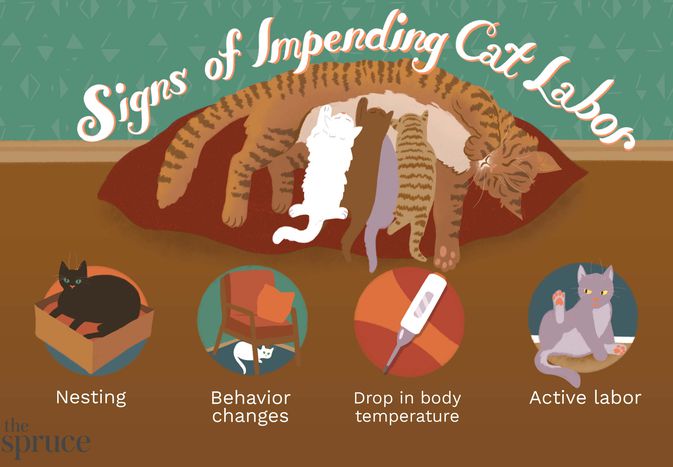
Where Should I Put the Litter Box?
You have a new kitten or have just welcomed a cat into your home, so now you need to cove...
Ticks are abundant in wooded and grassy areas where cats like to roam. When a cat passes vegetation where ticks congregate, the parasites climb onto the cat's fur and burrow down to attach to the cat's skin. Blood loss from ticks can be problematic in severe infestations, but the diseases carried by ticks are even more dangerous. Ticks transmit several blood-borne diseases that can cause life-threatening illnesses in both cats and humans. It is essential to remove any ticks you spot on your cat's skin quickly and efficiently to minimize harm to your cat. If you remove the tick within 48 hours of its attachment, the risk of disease transmission from the tick is greatly reduced.
Ticks are small, eight-legged, oval-shaped arachnids that vary in size from less than a millimeter to about a centimeter long, depending on life stage. Ticks feed on animals' blood by embedding their mouthparts in the hosts' skin. They remain attached until full of blood, then they drop off. The longer ticks stay embedded, the greater the chance they will transmit diseases such as Lyme disease. Ticks are most commonly encountered during the warmer months, from spring to fall.
Ticks can cause itching, but very often there are no other overt symptoms until and unless your cat develops a tick-borne illness. Thus, the only "symptom" you may see is a tick on your cat.
Ticks are often too small to spot easily, and a cat's dense fur makes finding a tick even more difficult. Nymphs (a tick's youngest life stage) are extremely small and hard to see. Run your hands over your cat’s body each evening to check for any small bumps. A tick will feel like a small, movable nodule on your cat's skin. They commonly attach themselves to the skin on a cat’s head, neck, ears, and feet.
Compared to dogs and humans, tick-borne disease in cats is relatively rare. Cats can get Lyme disease just like dogs and humans, and, if treated early, should fully recover. There is no Lyme disease vaccine for cats.
Tularemia is another disease that can be transmitted to cats via ticks. Again, there's no vaccine for this disease in felines. High fever and loss of appetite are the most common symptoms in cats. Tularemia is treated with antibiotics.
Cytauxzoonosis (also called bobcat fever) is another tick-borne illness that affects cats. Symptoms include anemia, fever, jaundice, and difficulty breathing. This is a very serious, potentially fatal infection, and even if a course of antibiotics and intravenous fluids are administered promptly, the cat may still die from cytauxzoonosis. This is another tick-borne illness for which there is no preventive vaccine available to cats.
Ticks gain access to cats as they move through the outdoor environment, and the parasites quickly migrate through the fur to the skin. There, they pierce the cat's skin and begin feeding on blood. Ticks may remain attached to a cat for several days before they drop off; while attached to the cat, they can transmit microbes that can cause the diseases described above.
Ticks are easily diagnosed on sight. The diseases they carry are more difficult to diagnose and may require blood tests for identification. Often, tick-borne diseases are diagnosed based on the known presence of a tick and subsequent symptoms of fever, lethargy, and generalized pain.
In some areas, ticks are very common. If your cat goes outside, it's helpful to keep essential tick-removal supplies on hand, including sharp-nosed tweezers, a small jar of rubbing alcohol, and a disinfectant. To minimize any chance of hurting your pet (or getting scratched yourself), ask a partner to help with restraint.
Once you have your supplies and helper in place, follow these steps:
If Lyme disease or other ailments are prevalent in the area, do not throw the tick away or flush it down a drain. Instead, take the tick in a secured container to your veterinarian for testing and identification.
After removing the tick and treating the affected area, monitor your cat's behavior, appetite, and skin for a few weeks.
If your cat is lethargic, loses its appetite, or develops welts or rashes near the tick bite, it may have contracted a disease from the tick and will require medical attention right away. Monitoring its condition and getting it to the vet as soon as possible can help minimize the impact of any illness.
If a tick is removed within 48 hours of attachment, the risk of disease transmission is small, and the cat will suffer little more than an itchy bite, which should heal within a couple of weeks. Cats that contract a tick-borne disease may feel ill for much longer, even with proper treatment, and some will die despite treatment (particularly in cases of cytauxzoonosis).
There are several good ways to prevent ticks on cats. The first is simply to keep your cat indoors; while this is not foolproof, it dramatically reduces the likelihood of ticks. There are also several preventive tick treatments for cats available:
While all of these preventatives can be effective, none is guaranteed, and any chemical treatment carries risks of side effects. It's particularly important to be vigilant, particularly if your cat spends a lot of time outdoors.
While ticks aren't contagious, they can migrate from a cat to other species. If a cat brings ticks indoors, they may fall off after feeding, remain in the house, and attach to another pet or human when ready to feed again.

You have a new kitten or have just welcomed a cat into your home, so now you need to cove...

It’s no secret that cats love fish—the fishier, the better. Tuna is a quintessential ...

Although most people know that the vast majority of calico cats are female, they don’t ...

So you were a little slow in having her spayed and your cat turned up pregnant. Or, perha...

If you have a pregnant cat (queen), and it looks like she is ready to birth her kittens (...

Pinworms, also known as threadworms, are a common problem for people and especially ...

Some cats will beg and plead for human food, especially when they see you eating. But, ca...

Feline immunodeficiency virus is also known as FIV or feline AIDS. The disease is caused ...

A critical part of a dental care program for cats is an at-home examination of their ...
Comments on "Ticks in Cats" :